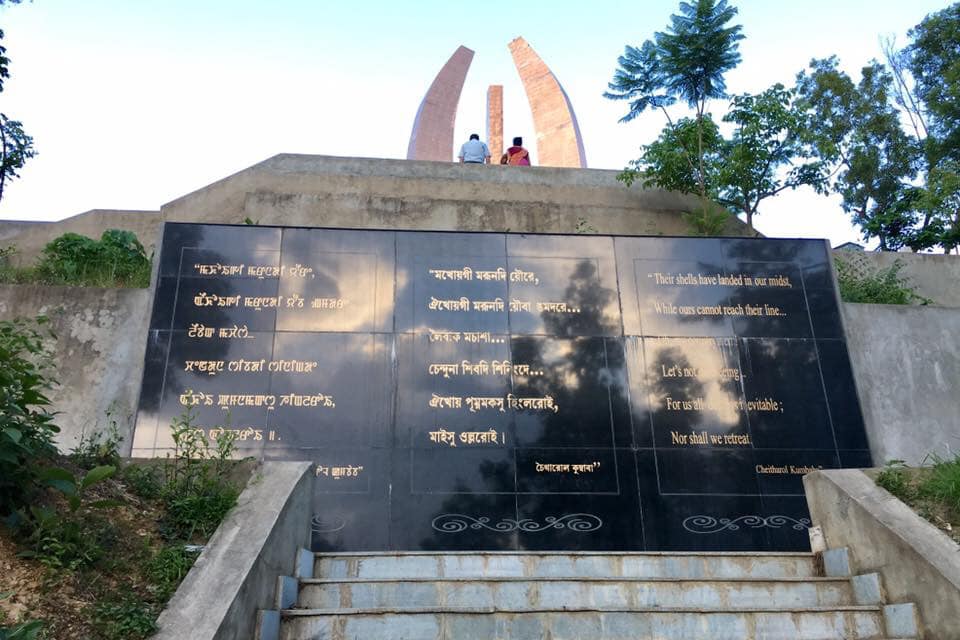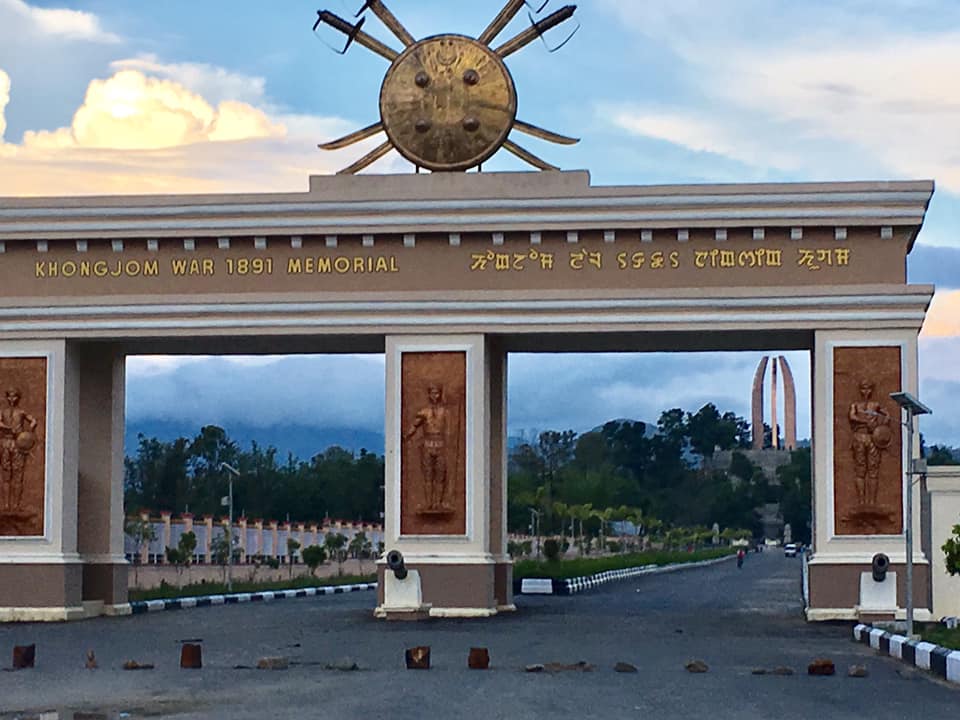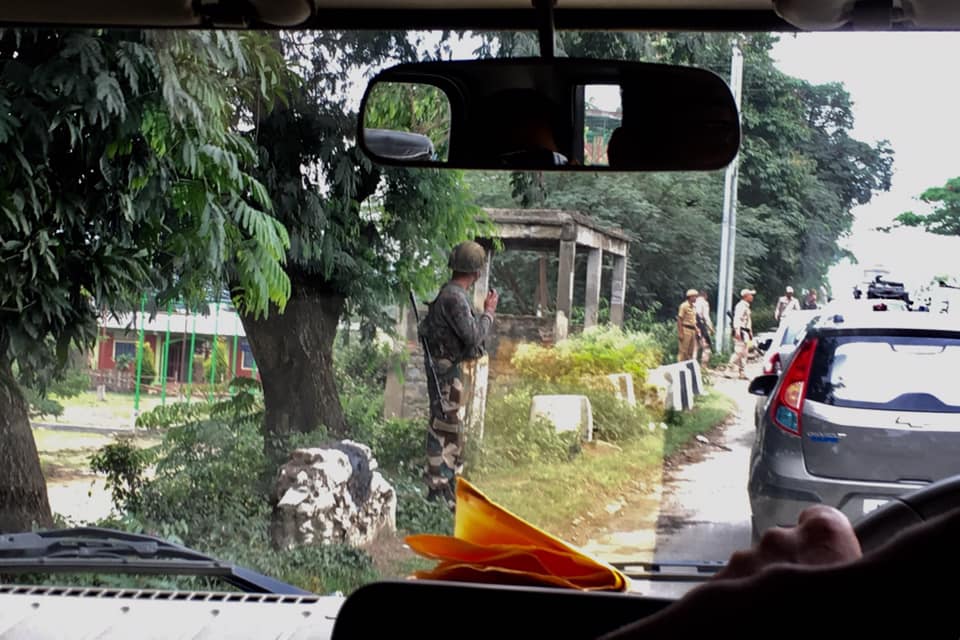CNI Article
The Writing- Chit Min Tun
28 October 2024
India gained its independence in 1947 from under the British colonial rule on 15th August 1947 and kept staying as a dominion country for three years.
And then, India became a separate independent country on 26th January 1950 after the constitution that was drafted for two years was finished.
Myanmar gained its independence on 4th January 1948 from under the British colonial rule as well.
So, India and Myanmar historically have similarities in some parts and a variety of races are living in both countries. For example, Meitei, Naga, Shan, Chin and so on are living in both countries and Nagaland, Manipur, Mizoran and Aruna Chaparadesh States (There were Assam and Manipur States only in the past) had been under the rule of Myanmar kings. But now they are part of India.
In the same way, as most of the laws enacted in Myanmar derived from India, India and Myanmar have historically similarities in some parts.
So, some elements are trying to solve ethnic issues and reform Myanmar politics while even heads of the Myanmar Tatmadaw have said that having studied the India's federalism, a federal union should be established in Myanmar.
According to above-mentioned conditions, because it was necessary to study the constitution of India and its political systems, I'd like to share subjects and experience I had to study when I was in India. I went to India in May, 2018 and spent over one week there studying the India's political situations and rights for ethnic groups.
Staying in New Daily and Inpha and Moreh Towns, Manipur State where Meitei, Assam and Naga armed groups have been active, I could study the constitution and rights for ethnic groups.

While seeing Meitei kings and commanders in chief in the museum
India's multi-culturalism
*************************
India is made up of seven union territories, 28 States and over 200 ethnicities. In the same way, there are a variety of religions and languages that are spoken in India as well.
Hindi and English have been enacted as office languages. However, in the states that have been made up of national characters, in addition to Hindi and English, languages of the tribes living in the states are allowed to use as official languages.
For example, in Nagaland State, Hindi, English and Naga have been designated as office languages and in Manipur State, Hindi, English and Meitei, as office languages.
So, 14 languages including main languages, Hindi and English have been enacted as office languages.
National races have been allowed to keep and look after their flagship buildings, icons and lifeless things of national races.
Meitei people have been allowed to keep and look after the old palace of HIJAGANG, a Meitei king and the historical military museum honoring PRONA BRAJABASI, a Meitei C in C.
However, discrimination between lower caste and higher caste cannot be removed up to now while the unity between Hindi and Islam still cannot be built.

While seeing Meitei, English and Hindi languages written on the Martyr Mausoleum in Manipur State
Multi-culturalism of Myanmar
********************************
Myanmar is a country where a variety of races are living, which is enacted in Section 3, principles of the State of Chapter-1 of the 2008 Constitution.
According to Section-21 of the 2008 Constitution, every citizen can enjoy equal right, freedom and justice opportunities.
Moreover, according to Section-22 (a) of the constitution, the State will help develop languages, literature, arts and culture of the national races and according to Section-22 (b), the State will help develop the unity, fraternity and help among the national races.
Diversities of background histories, traditional cultures, literatures, languages and national characters of the national races living in Myanmar are accepted and recognized and implementing a union character together is agreed, according to the Chapter (1), Clause-1 (f) of the Nationwide Ceasefire agreement (NCA) that was signed by the government, the Tatmadaw and EAOs.
However, in the 21st Century Panglong Conference that was held from 19th to 21st August 2020, although chairman of the RCSS/SSA and the leader of the 10 NCA signatories, a Shan ethnic, wanted to deliver a speech with his mother tongue, he had to speak in Burmese because the government didn't allow him to do so.
So, the above-mentioned incident was different from provisions described in the 2008 constitution and from the agreements described in the NCA.
How India carries out security operation
**********************************************
India is facing secession movements of Meitei, Naga, Assam and Bodolan armed groups in the seven northeastern States including Nagaland, Manipur, Aruna Chaparadesh and Mizoran States.
In the same way, it is facing secession attempts of Sikh and Muslims in Kashmir and Punjab States. India is carrying out security operations for its stability with the Assam Rifle Force, the Special Force, the Police Force, the Special Police Force and the Border Guard Force.
The Assam Rifle Force, Special Force, the Police Force and the Special Police Force are carrying out security operation in Inpha Town, Manipur State around the clock.
On the other hand, the Indian government is discussing peace with armed groups and especially with the National Socialist Council of Naga led by Isak Chishi Swu and Muivah. Moreover, bank security staffs have been allowed to hold guns so as not to enable banks to be robbed.
Moreover, ethnic people who are the same ethnicity as ethnic armed groups fighting against the central government have been appointed as senior government staffs in order to maintain stability and those who are the same ethnicity as ethnic armed groups are appointed as chief minister of state to maintain one another.

While seeing the entrance to the historical museum of a Meitei Commander in Chief
How has India controlled armed forces?
******************************************
In the constitution of India, commander in chief of the armed forces is the President. However, army, navy, air force and coastal guard forces are managed by the ministry of defense.
Moreover, police force, reserve army forces, central armed police force and some special forces are controlled by the ministry of home affairs while some special forces are kept under the intelligence unit of the ministry of foreign affairs.
The Central Armed Police Forces that is made up of the Bureau of Special Force (BSF), the Central Industrial Force (CIF), the Central Reserve Police Force (CRPF), the India-Tibet Border Police (ITBP), the National Security Guard Force (NSG), the Border Special Bureau, the National Disaster Response Force (NDRF) and so on is kept under the ministry of home affairs.
The book on constitution and enacted laws relating to armed forces of five federal countries written by Dr. Salai Ngwe Kyown Lian should be read to know in detail.
How are armed forces controlled in Myanmar
*************************************************
According to Section-20 (b) of the 2008 Constitution of Myanmar, the Tatmadaw has the right to independently manage all the matters relating to armed forces.
The Commander in Chief is the head of all the armed forces in the constitution. In the same way, according to the 2008 constitution, the C in C has the authority to appoint the defense minister, the minister for home affairs and the minister for security and border affairs.
EAOs fighting against the Myanmar Tatmadaw because they dislike the constitution and the ruling system are not under the command of the Tatmadaw.
However, some troops from EAOs that changed into the border guard forces and the militia after making peace with the Tatmadaw are under the command of the Tatmadaw.
In the same way, self-organized militia are under the command of the C in C of the armed forces.

While security forces have been deployed in Inpha Town, Manipur State
According to the constitution of India, division of legislative power
*********************************************************************
According to the constitution of India, there are laws related to the central government and ones related to states while there are issues which the central government and states must cooperate.
The constitution of India took nearly two years to finish writing after studying advantages and disadvantages in the provisions of the constitutions from Australia, Britain and the US.
According to the constitution, division of legislative power is divided into three kinds and there are 97 cases which the union can enact the laws and carry out, and 66 cases, states and 47 cases, the union and the states together.
Matters relating to army, navy and air force, atomic power, declaring war, citizenship, railway transport, post and telegram, foreign relation, banking industry, financial system, foreign trade, performance of public industry and so on, important issues are included in the 97 cases in relation to the union.
Laws and order restoration of the state, regional government, police, prison and moral reformation camps, public health, education, agriculture, water supply, fishery industry, commerce within the state, agricultural tax and so on are included in the 66 cases which states can enact and carry out.
Procedures relating to penal code, marriage and divorce, handing materials over, bonds, bankruptcy, procedures on trial to be complied, matters relating to forestry, religious associations, cases relating to press are included in the 47 cases which the union and states have to enact the laws and carry out together.
If there are any problems about the division of legislative power between the union and states, the law which the union parliament enacts can make a decision and because legislature of states is void, the laws the union enacts supersede on the laws states enact
By studying the above-mentioned facts and information, you can consider which provisions from the constitution of India should be taken in building a federal union in Myanmar in the future, I think.
Reference
-Federal Affairs (book)
Constitutions and Provisions relating to armed forces of five federal countries (book)
Interview - discussing with Indian citizen professor Mr. Horam




